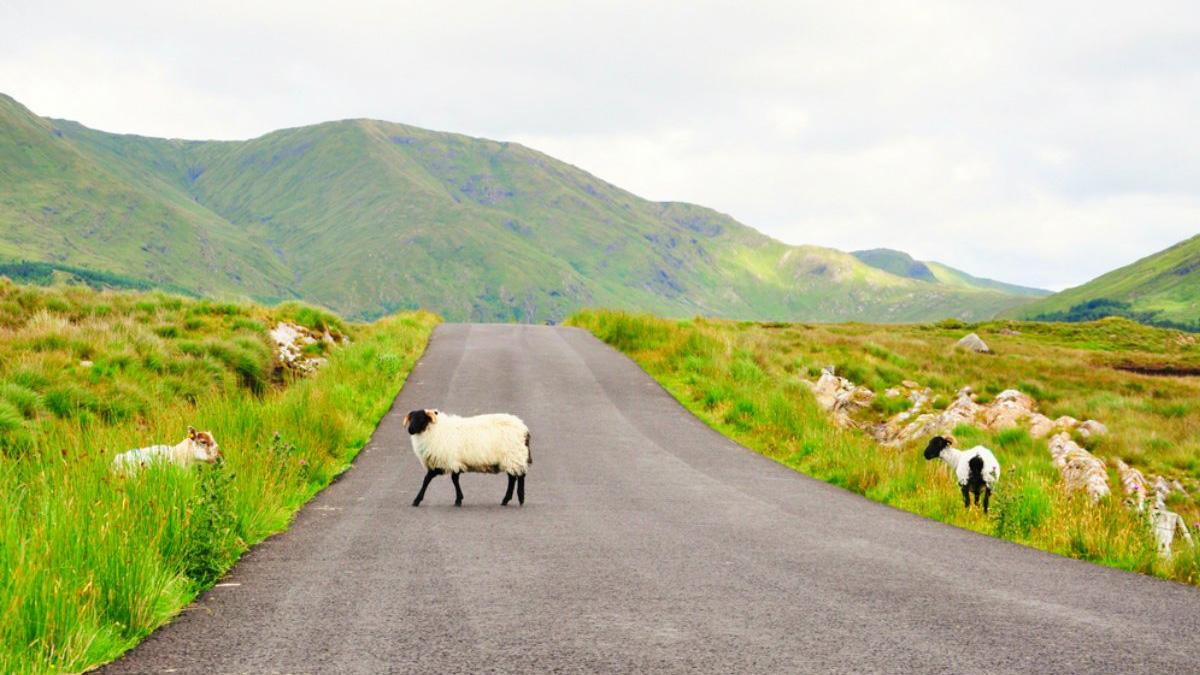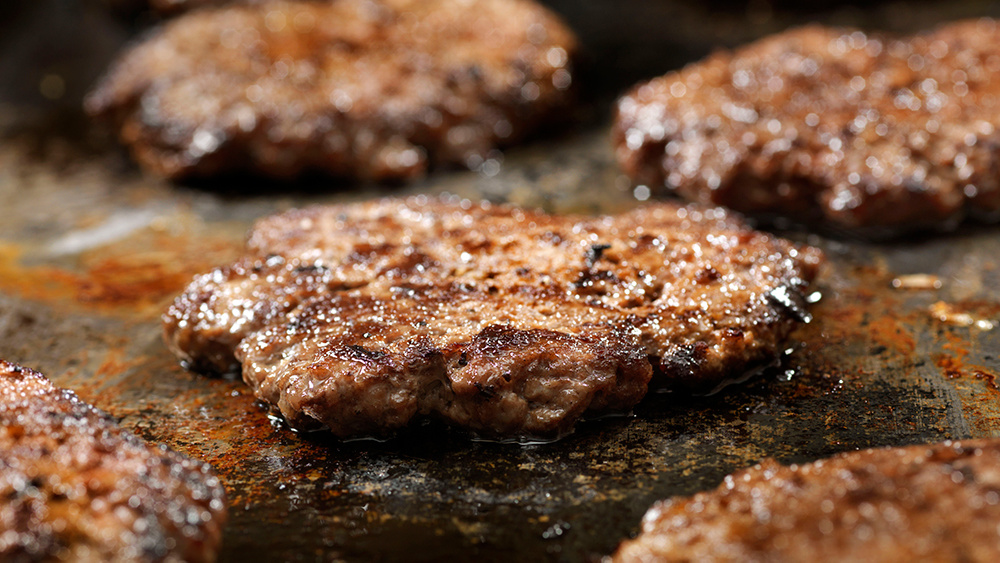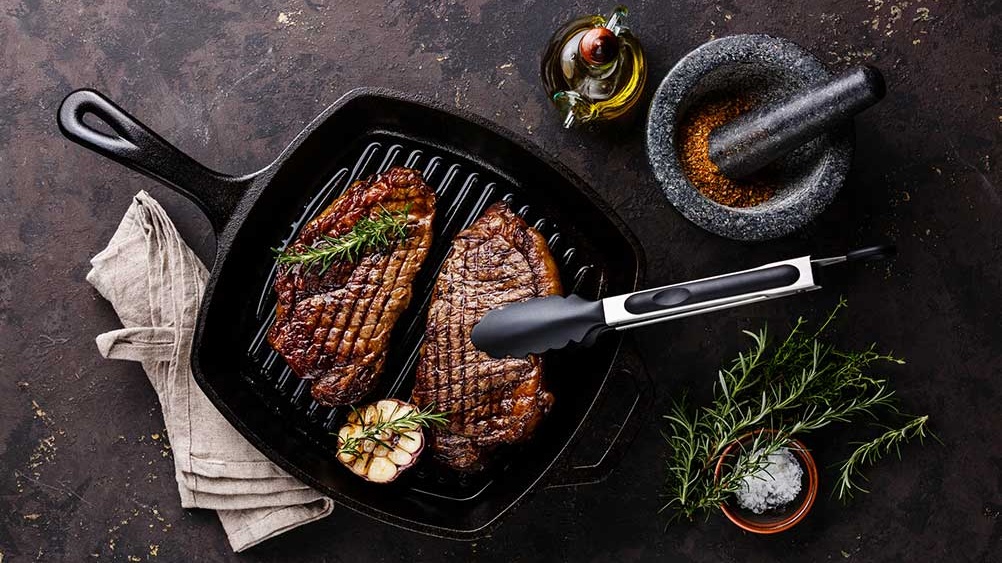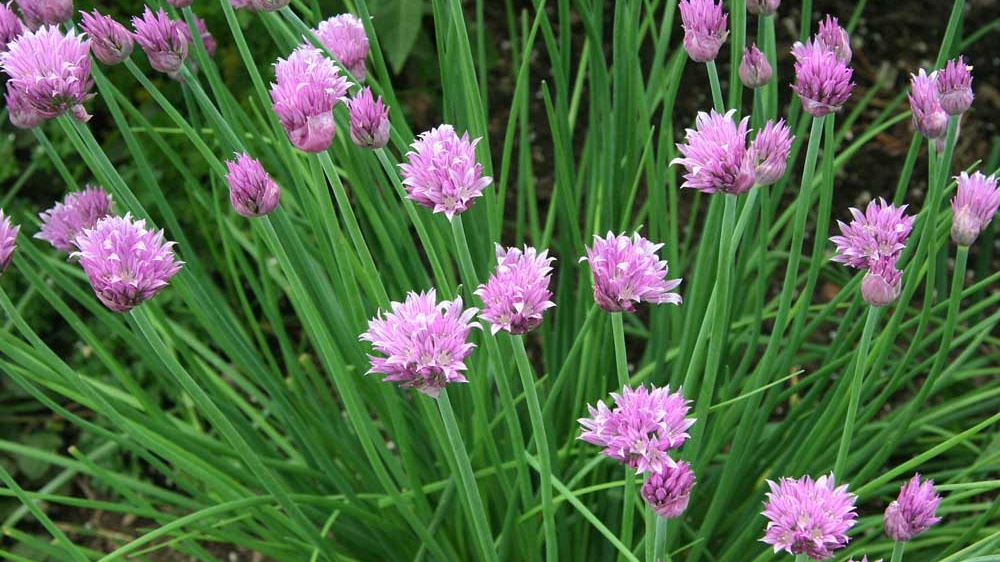Sheep or Cars?

 Add to favorites
Add to favorites
Did you know that Ireland has palm trees? No kidding! I didn’t know until I set foot on the Motherland.
My family left Ireland a few years before the potato famine, in the late 1800s. I don’t know for sure, but my guess is they were already broke so why wait until the last ship leaves for the United States? Might as well go now.
I arrived back in Ireland, by air, about 100 years later. Landed in Dublin. We had a client named Julian who had become a good friend. He lived in northwestern England. He’s the one that got the great idea. Julian decided his sales team needed some training and wanted to combine it with a special treat that included a little rest and relaxation Turns out that the ferry from England to Dublin isn’t very expensive. Julian put the whole crew on the boat and took them over for a long weekend. The real expense came in shipping the training company over from the US. That’s where I came in. My husband did the training and I came along as sort of a hostess for the group and general coordinator. There was no way I was going to let my husband go to Ireland without me. “No Siree”.
The training was to take place in a little town called Wicklow, located in County Wicklow. A bit redundant, but charming.
Wicklow is less than an hour south of Dublin. We drove. As we came into the small town my husband pointed to a tree on my left. Look there’s a palm tree! I took notice but figured it was something they planted outside for the spring and summer. Then I started noticing all kinds of tropical foliage. Turns out we had driven into what they call the “Garden County of Ireland”. I had no idea that part of Ireland is considered sub-tropical. Seems the Gulf Stream, as it winds its way up from the Gulf and across the Atlantic Ocean swirls across the eastern coast of Ireland where it meets the Irish Sea. That brings warm water and warmer air. Sort of a Florida feel.
Irish cottages dot the towns. Seems every one of them has a cottage garden out front. The gardens are dense, colorful, and well-tended. It’s a treat to walk around and smell the various bushes and patches of flowers. That was our first major surprise.
The other major surprise I want to talk about today came after the training was over. We had a few days to relax and tour. We decided to take our little rental car and drive up into the Wicklow Mountains. We wanted to get over to Waterford (a story for another day) but we had to cross the mountains to get there. There aren’t a lot of options for roads in parts of Ireland. Going up and over looked like it would take a lot less time than driving south along the coast to get to Waterford.
We were wrong, but who cares. The mountain roads up from Wicklow are narrow and harrowing. Most of them are lined with gorse. Gorse, if you’re not a student of mountain bushes, is thick, twisted brush that blossoms with yellow flowers. It’s fragrant, thick (did I say THICK?) and about impossible to see through. It’s planted along the roadsides of much of Ireland; especially around mountainous areas and farms. When you are traveling along these ultra-skinny roads and you have gorse on both sides of you. It’s sort of like driving through a yellow tunnel. You watch for little breaks in the gorse in hopes of catching a glimpse of the countryside. At intersections, you take your life in your hands because you can’t see cars coming and they can’t see you. Odds are there won’t be anyone at the intersection when you get there. But when they are there you scare the pants off of each other. No one knows who should go first and it’s tempting not to stop so it can be dangerous.
It’s not all that bad because the roads are so narrow and winding that you don’t get going very fast. In our little car, we were shorter than the gorse so we buzzed along pretty well unseen.
When we got up in elevation (the mountains there aren’t very high. The highest peak is 3000’) the gorse cleared and we could see for miles. Even with the view, we couldn’t pick up much speed, but we weren’t in a hurry anyway.
We came around one curve and were brought directly to a dead stop.
The sheep.
You don’t have to worry about cars when you get up this high. Your concern, now, is the sheep. Sheep have the right of way. Sheep have no fences up there to hold them in. They have free range of the mountains. Thousands of sheep. Sheep as far as the eye can see.
Speaking of eyes that can see. These sheep can look you straight in the eye!
“How?” you ask. Remember, we are in a small car. We are now at a dead stop because sheep are covering the road. These aren’t your average sheep. These mountain sheep are monstrous. They are so large they can walk up to the car and press their nose on the window and pretty much look you smack in the face.
I was stunned. When I broke my silence all I could say was, “They are as large as Volkswagons!” Enough said. I exaggerated but that’s not unusual. Let’s just call them huge.
Each female was white and had one other color “tattooed” on her back. Some had red; others blue. I found out later there’s a method to that madness and the color is sort of a brand. It tells the shepherds which male had been matched up with which female. Instead of marking them with a brand or a number or some other such system, they just dip the ram’s feet in dye. Then when he meets up with his lady friend to make baby sheep he leaves his dye marks on each side of her back. Go figure. I guess the system works. Makes for a colorful landscape of sheep, too.
We finally made it to Waterford but not without stopping to let the sheep pass on several occasions.
I figured out more about the gorse later too. Seems it’s cheaper to plant gorse than build fences. Less maintenance too. Gorse keeps the sheep ON the farm. It marks the edges of your land, makes for a beautiful fragrance when it blooms and it lasts for hundreds of years. Those early farmers who planted that gorse were an intelligent breed themselves. And I count them among my relatives.
Yep, I’m a proud, Irish lass.
Cheers,

Nothing found.
Smash Burgers
ZS-5 Ingredients or Less,ZReboot,Featured Posts,ZSpecialties,Recipes
Smash burgers are all the rage. Step into a brew pub and you’ll likely find a smash burger on the food menu. These are NOT the huge, 8oz burgers we’ve been fed in the past. These are a thinner burger…
Nothing found.
Cooking with Cast Iron
Like seared meats and veggies? You'll love cast iron. Here are some of the benefits of cooking with cast iron and a few hints for use and maintenance.
Chives
My chives were the first thing to come up in my herb garden every year. As soon as the snow melted I could see their little heads popping up through the soil. By the time it was warm enough to…





